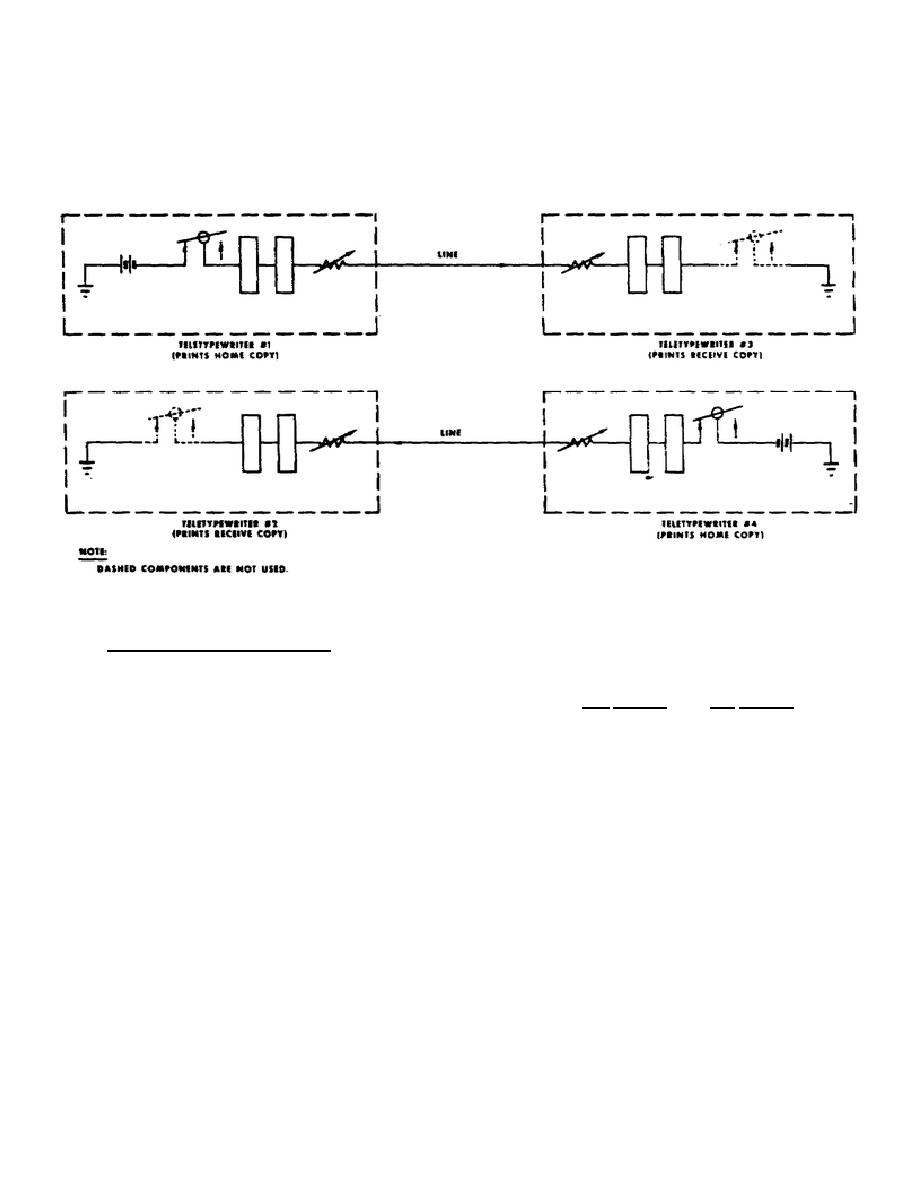
b. To change neutral to polar signals, you need a dc repeater at both the sending and receiving stations. A dc
repeater includes a send relay, a receive relay, and associated supply to voltages. The send (neutral-to-polar) relay
changes the neutral signals to polar signals. The receive (polar-to-neutral) relay does the opposite--it changes polar
signals from the line back to neutral signals to operate the receive teletypewriter. The polar signals are usually 30 ma
current signals in either direction. However, different current values, such as 20 ma can be used, depending on system
design, so long as the current in each direction is the same.
FIGURE 83. Full-Duplex Circuit -- Home and Receive Copy Printed at Each Station.
88.
How the Polar Send Relay Works.
a. A polar relay (fig. 84) consists of a flexible armature with one end anchored in a permanent magnet. It has
pole pieces for sensitivity adjustment, and two windings around the armature--a bias winding and a line winding.
b. The bias winding has a fixed value of 30 ma flowing through it when the line winding is connected to a
neutral-polar switch. When the line winding receives neutral signals, the switch is closed. (When this type of relay has
polar signals applied to the line windings as in the receive relay, the neutral-polar switch is opened.)
175



 Previous Page
Previous Page
